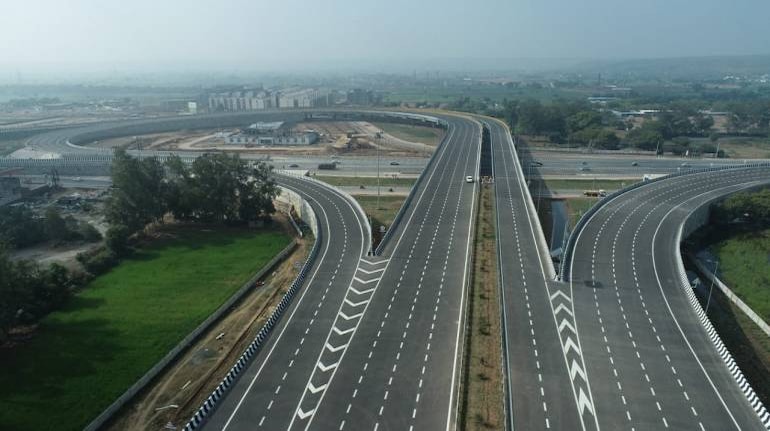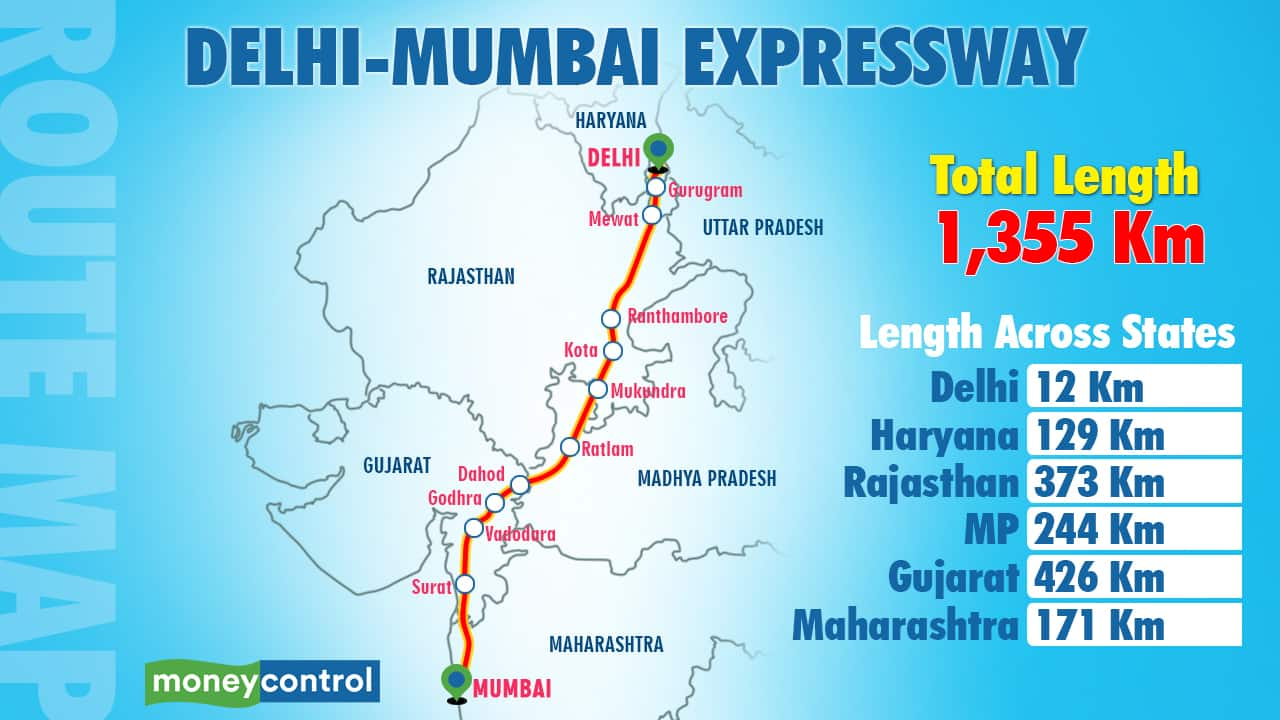



Prime Minister Narendra Modi inaugurated the 246-km Delhi-Dausa-Lalsot section of the Delhi-Mumbai Expressway on February 12. The expressway, which is being projected as the country’s longest, is divided into four sections and the remainder of the stretches will be completed by 2023 end.
After completion, the Delhi-Mumbai Expressway is expected to reduce the travel time from India’s national capital to the country’s financial capital in half, from the current 24 hours to 12 hours.
Let’s delve deeper into what makes the expressway so special for India’s growth story and has something for everyone, including flora and fauna.
Route map for the economic growthThe Delhi-Mumbai Expressway is the country's longest and has a total length of 1,355 km. It will reduce the travel distance between Delhi and Mumbai by 12 percent from 1,424 km to 1,242 km.
It expressway passes through the Union territory of Delhi and states like Haryana, Rajasthan, Madhya Pradesh, Gujarat, and Maharashtra while providing connectivity to major cities like Kota, Indore, Jaipur, Bhopal, Vadodara, and Surat.
Along the route, the expressway will serve 93 PM Gati Shakti Economic Nodes, 13 ports, eight major airports, and eight multi-modal logistics parks (MMLPs) along with new upcoming greenfield airports such as Jewar Airport, Navi Mumbai Airport, and JNPT port.
 Credit: Suneesh Kalarickal
Credit: Suneesh KalarickalBesides the “catalytic impact” in the developmental trajectory of all adjoining regions, as the government puts it, the Centre has estimated that it will collect Rs 1,000-1,500 crore in toll revenue every month once the expressway is fully operational.
Union Road and Transport Minister Nitin Gadkari said that the expressway will be a growth engine for the 500 backward blocks it passes through.
The maximum speed limit on the eight-lane wide access-controlled expressway will be 120 kmph. The government has reserved space in the middle of the road for additional four lanes during future expansion plans, which will convert the expressway to 12 lanes.
The greenfield expressway (construction of a project on a new alignment) is being constructed using German technology - wherein the road surfaces are being built using multiple layers of concrete - and is expected to last at least 50 years.
To address medical emergencies for commuters, trauma centres are available every 100 km on both sides of the expressway. It will also have helipads with airlift facilities for people needing emergency medical supervision.
Emergency call boxes are installed every 5 km to help commuters connect directly to the central command and control room of the expressway.
Salient featuresThe expressway is built at an estimated project value, including the land acquisition cost, of around Rs 1,05,000 crore.
It is India’s first expressway to have animal overpasses and underpasses. There will be three animal overpasses and five underpasses in the entire stretch to facilitate the unrestricted movement of wildlife. “We must do good for wildlife preservation. For the shielding of Wildlife Habitats, we are constructing overpasses, underpasses, and boundary walls on the Delhi-Mumbai Expressway,” Union Minister for Road Transport and Highways Nitin Gadkari has said.
There would be no charges at the entry of the Delhi-Mumbai Expressway and vehicles will be charged only at the exit gates.
The expressway will have a green cover of 20 lakh trees, watered with drip irrigation, and has a rainwater harvesting system installed every 500 metres.
An electric cable will be laid between Jaipur and Delhi enabling e-trucks and e-buses to ply on this expressway.
The expressway will have 94 wayside amenities to improve commuter experience.
Discover the latest Business News, Sensex, and Nifty updates. Obtain Personal Finance insights, tax queries, and expert opinions on Moneycontrol or download the Moneycontrol App to stay updated!
Find the best of Al News in one place, specially curated for you every weekend.
Stay on top of the latest tech trends and biggest startup news.